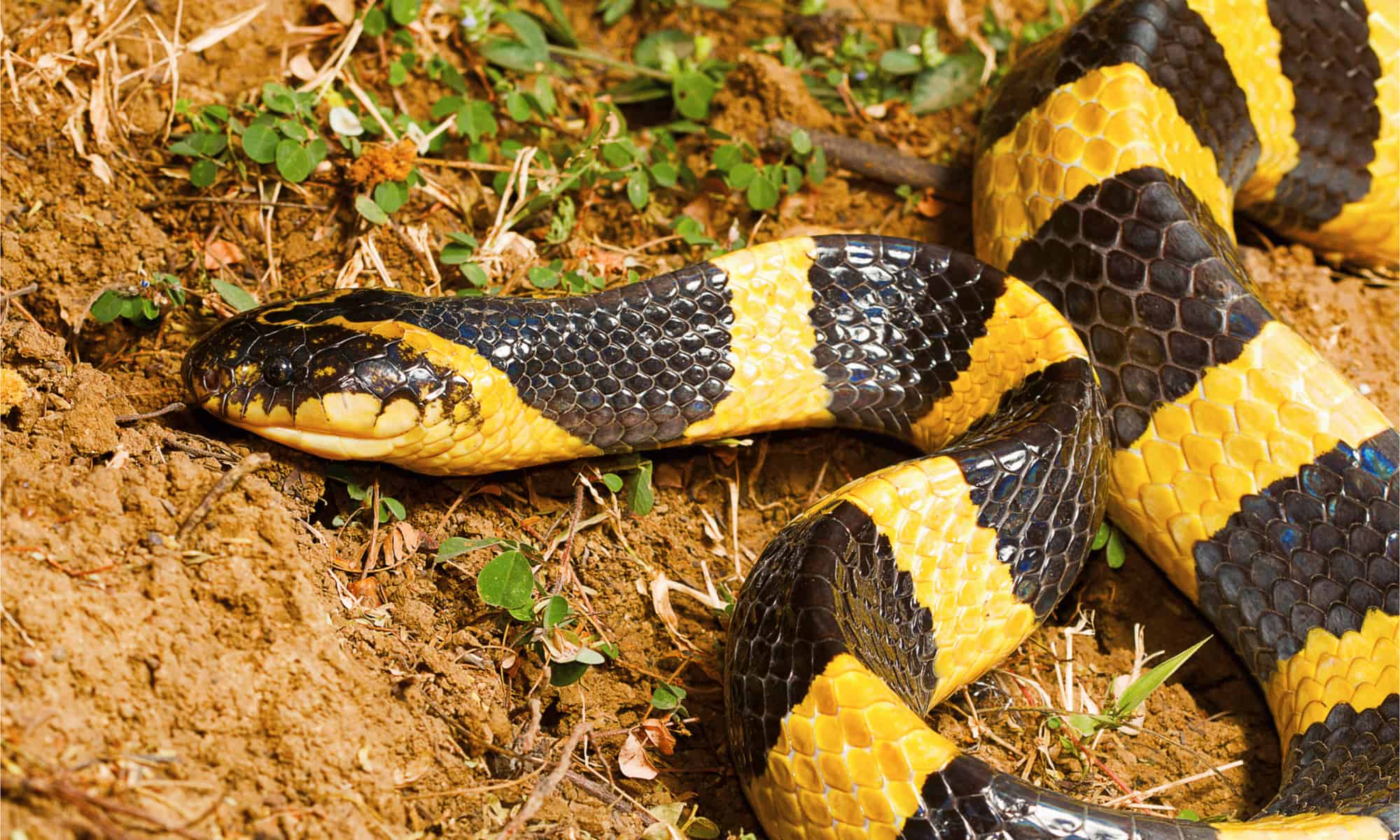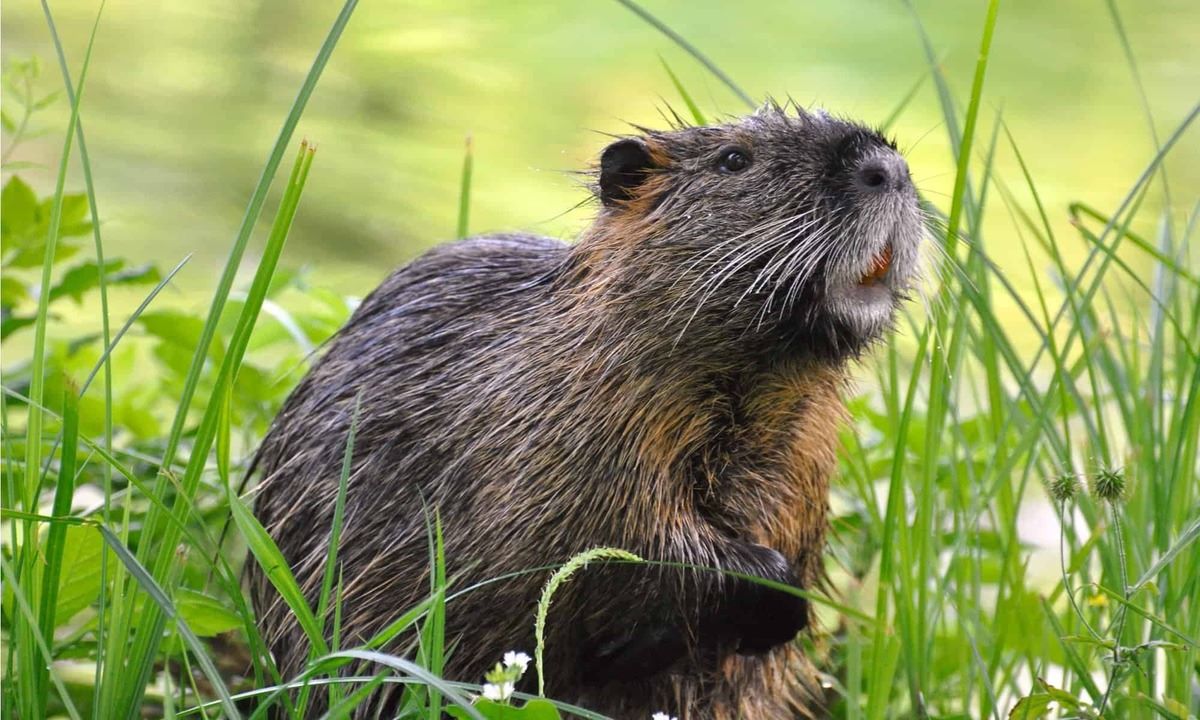
Banded Kraits are fascinating creatures that captivate both scientists and nature enthusiasts alike. With their distinctive black and yellow bands, these venomous snakes are known for their beauty as well as their potent venom. Found primarily in Southeast Asia, Banded Kraits have a mysterious allure that makes them a topic of curiosity and intrigue.
In this article, we will delve into the world of Banded Kraits and explore 16 captivating facts about these remarkable serpents. From their biology and habitat to their behavior and unique adaptations, there is much to discover about these enigmatic creatures. So, prepare to be amazed as we unravel the secrets behind the stunning appearance and deadly reputation of the Banded Krait.
Key Takeaways:
- The Banded Krait, with its striking appearance and potent venom, plays a vital role in its ecosystem by controlling the population of prey species, contributing to a healthy and balanced environment.
- Despite being one of the deadliest snakes, the Banded Krait is relatively shy and non-aggressive, preferring to avoid confrontations. Efforts are being made to protect and conserve this fascinating species.
The Banded Krait is one of the deadliest snakes in the world.
With its striking black and white banded pattern, the Banded Krait commands attention and respect. It is known for its potent venom and strong neurotoxic effects.
The Banded Krait is native to Southeast Asia.
This elusive snake can be found in countries such as India, Bangladesh, Myanmar, Thailand, and Vietnam. It thrives in diverse habitats, ranging from forests to farmlands.
The Banded Krait is a member of the Elapidae family.
Alongside other venomous snakes such as cobras and mambas, the Banded Krait belongs to the Elapidae family. These snakes possess hollow fangs used to inject venom into their prey.
Adult Banded Kraits can reach lengths of up to 1.5 meters.
While juveniles of this species are relatively shorter, adult Banded Kraits can grow to impressive lengths. Their slender bodies make them agile and efficient hunters.
The Banded Krait feeds primarily on other snakes.
As an apex predator, the Banded Krait preys on a variety of snakes, including venomous and non-venomous species. Its primary food source consists of other snakes, making it a fascinating predator.
This snake possesses potent venom.
The venom of the Banded Krait is highly toxic and can paralyze its prey within minutes. Its neurotoxic properties affect the nervous system, leading to respiratory failure if left untreated.
Banded Kraits are usually nocturnal.
These snakes are predominantly active at night, using their excellent eyesight to hunt under the cover of darkness. Their nocturnal behavior allows them to sneak up on unsuspecting prey.
The breeding season for Banded Kraits occurs during the summer months.
During the summer months, male Banded Kraits actively seek out females for mating. This period is marked by intense courtship displays and mating rituals.
The Banded Krait gives birth to live young.
Unlike many snake species, the Banded Krait is ovoviviparous, meaning the eggs develop internally and the female gives birth to live offspring. This adaptation ensures the survival of the young in challenging environments.
Banded Kraits have excellent camouflage.
The distinctive black and white banding of the Banded Krait provides effective camouflage in their natural habitat. This pattern helps the snake blend into its surroundings, making it difficult for predators and prey to spot them.
Encounters with Banded Kraits are rare due to their elusive nature.
Due to their nocturnal habits and preference for secluded habitats, direct encounters with Banded Kraits are relatively uncommon. However, it is important to exercise caution and avoid provoking these venomous snakes.
Banded Kraits are known to be relatively shy and non-aggressive.
Despite their potent venom, Banded Kraits generally exhibit shy and non-aggressive behavior unless threatened. They prefer to avoid confrontations and will typically retreat if given the opportunity.
Antivenom is available for treating Banded Krait bites.
Medical advancements have led to the development of specific antivenom for Banded Krait bites. Timely administration of antivenom can significantly increase the chances of survival for individuals affected by their venom.
The Banded Krait is listed as a protected species in many countries.
Due to habitat destruction and illegal wildlife trade, the Banded Krait is facing population declines in several regions. Efforts are being made to conserve and protect this fascinating snake species.
The Banded Krait plays a crucial role in maintaining ecological balance.
As an apex predator, the Banded Krait helps control the population of prey species, contributing to the overall health and balance of the ecosystem it inhabits.
Research on Banded Kraits is ongoing to better understand their behavior and venom.
Scientists and researchers continue to study Banded Kraits to gain insights into their habits, venom composition, and potential medical applications. These studies contribute to our understanding of venomous snakes and aid in the development of lifesaving treatments.
Conclusion
In conclusion, banded kraits are truly fascinating creatures with unique characteristics and behaviors. From their striking appearance to their deadly venom, these snakes command both respect and awe. Their ability to adapt to various environments and their nocturnal hunting habits make them successful predators in the animal kingdom. As we continue to learn more about these elusive creatures, it becomes even more clear that they play a crucial role in maintaining the delicate balance of ecosystems. By understanding and appreciating the intricacies of the banded krait, we can better protect and conserve their natural habitats for future generations to marvel at these captivating snakes.
FAQs
1. Where can the banded krait be found?
The banded krait can be found in South and Southeast Asia, including countries such as India, China, Thailand, and Vietnam.
2. Are banded kraits dangerous to humans?
Yes, banded kraits are highly venomous and can deliver a potentially lethal bite if provoked or threatened.
3. How big can a banded krait grow?
Banded kraits can grow up to 6 feet in length, making them one of the larger species of venomous snakes.
4. What do banded kraits eat?
Banded kraits primarily feed on other snakes, but they also consume small mammals, lizards, and birds.
5. Are banded kraits endangered?
Yes, banded kraits are listed as a species of concern due to habitat loss, illegal wildlife trade, and human persecution.
6. How do banded kraits hunt?
Banded kraits are nocturnal hunters that use their keen senses of smell and sight to locate and ambush their prey.
7. Can banded kraits be kept as pets?
Keeping banded kraits as pets is not recommended, as they are highly venomous and require specialized care.
8. What is the lifespan of a banded krait?
The lifespan of a banded krait is estimated to be around 12 to 15 years in the wild.
9. Are there any myths or legends associated with banded kraits?
In some cultures, banded kraits are believed to possess mystical or spiritual powers and are associated with folklore and superstitions.
10. How can we help conserve the banded krait?
We can help conserve the banded krait by supporting conservation organizations, spreading awareness, and advocating for the protection of their natural habitats.
Banded kraits captivate with their striking appearance and deadly reputation, but many more serpentine wonders await your discovery. Delve into the astonishing world of manybanded kraits, where even more mesmerizing facts lie in wait. Each snake species holds its own unique secrets, ready to be uncovered by curious minds like yours. So, why stop here? Continue your exploration of the fascinating realm of snakes and expand your knowledge with every captivating article you encounter. The serpentine kingdom holds countless surprises, and we're here to guide you through them all.
Was this page helpful?
Our commitment to delivering trustworthy and engaging content is at the heart of what we do. Each fact on our site is contributed by real users like you, bringing a wealth of diverse insights and information. To ensure the highest standards of accuracy and reliability, our dedicated editors meticulously review each submission. This process guarantees that the facts we share are not only fascinating but also credible. Trust in our commitment to quality and authenticity as you explore and learn with us.


